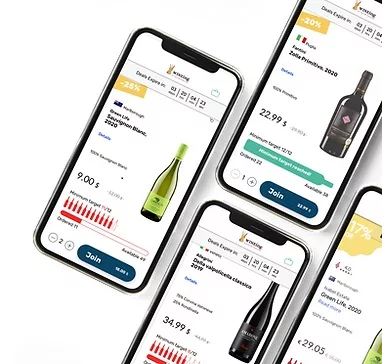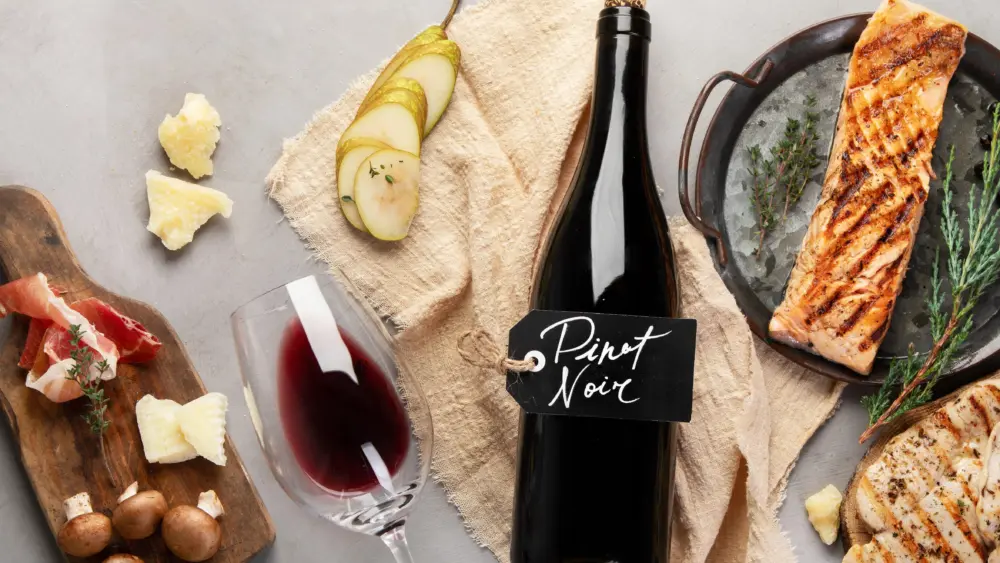
Digital platforms offering discounts for group buying could be a way forward for the wine industry.
Is cooperative buying part of the solution for California’s current wine glut? At least one entrepreneur thinks so.
COVID put a crimp in Moshé Wizeman’s wine buying. As a tech executive living in Israel, Moshé would visit some of Europe’s great wineries and return with cases of wine. But with the pandemic restricting travel, Moshé was forced to order his wine online and found it to be a frustrating endeavor. To make it efficient, he’d bring his relatives and friends into the process, enticing them by saying that if they purchased a certain amount of bottles from one retailer there would be an additional discount on the wine or a break on shipping. In short, Moshé became a wine pimp.
Moshé started to wonder why there wasn’t an easier—automated—way to accomplish what he was doing on his own. From this thought, WINEing was born.
WINEing creates buying cooperatives, and through an automated system allows individual buyers to take advantage of larger-quantity discounts unavailable to most individual buyers. It automatically reminds buyers that offers are expiring and, perhaps most importantly, lets buyers know when they are in striking distance of the next level of discounts. WINEing has been rolling out trials throughout Europe, working with wineries and wine events in Italy, France and other parts of Europe. So far, the results have been quite positive, with many of the tests showing an increase in sales of up to 30% above what similar non-cooperative offerings have generated. Moshé is now bringing WINEing to the United States with trials scheduled at a major East Coast retailer and conversations underway with importers, distributors and online retailers.
Let me give you just one example of how WINEing works. Imagine a large consumer wine event (think World of Pinot Noir, purely as an example). Traditionally, these events have been far more focused on winery exposure than wine sales. But now, WOPN works with WINEing and a select group of wineries to sell wine. For one week before the event and one week after, WOPN attendees have a chance to purchase wines that they will or have tasted at the event. These attendees are presented with a list of available wines, and they purchase based on what they like. If combined sales equal, for instance, 14 cases all attendees get 10% off their purchase. If sales reach 28 cases, attendees get 15% off their purchase, and if sales reach 56 cases, then the discount is 20%. Over the two-week period, attendees get emails reminding them of the opportunity to purchase, and notifications that they are just a few bottles away from another discount level. Obviously, these are just sample figures (personally, I think I’d stair-step up the discounts by 1% at a time, creating more excitement for customers). Now, World of Pinot Noir has turned into a sales opportunity for wineries.
Consumer events are just one place where WINEing can work. Retailers can combine their Burgundy buyers together in one buying group. Smaller, California wineries can go in together and promote group buying opportunities for their consumers. Larger wine organizations, with numerous wineries under their umbrella, can combine offerings among their various labels. Depending on state law, distributors can group together retailers and restaurants into one buying group. Importers can use WINEing to sell more wine at a better price to distributors and/or accounts. I am not certain that the opportunities are endless, but there’s a whole world of possibilities that are just now being explored.
WINEing is paid as a percentage of sales. If it is successful then Moshé makes more money. If not, then he doesn’t. This limits participants’ risk and hopefully invites new experimentation with the application.
The United States market does present some unique challenges to the WINEing model. Unlike most of Europe, where wine shipping is rather simple, the myriad state shipping laws complicate the fulfillment process of WINEing. Moshé is well aware of this challenge as well as some other unique characteristics of the United States market. I’ve met with him once, and spoke with him many times, and he remains convinced that there are ways around this. And I agree with him. The challenges here are no greater than those faced by wineries on a daily basis, while the upside of WINEing remains strong.
Wine businesses have traditionally been slow to adopt new technologies. For many of us, our time is spent walking the vines and topping barrels. Talk to us about adopting new technologies such as WINEing and our eyes glaze over. But we don’t have that luxury any longer. Moshé is betting that enough of us now realize we need to think outside of the box.
Adam Lee co-founded Siduri Wines in 1994, selling it to Jackson Family Winery in 2015. He now produces and owns Clarice Wine Company, and consults with numerous different wines, including Rombauer Vineyards on their Pinot Noir project.




